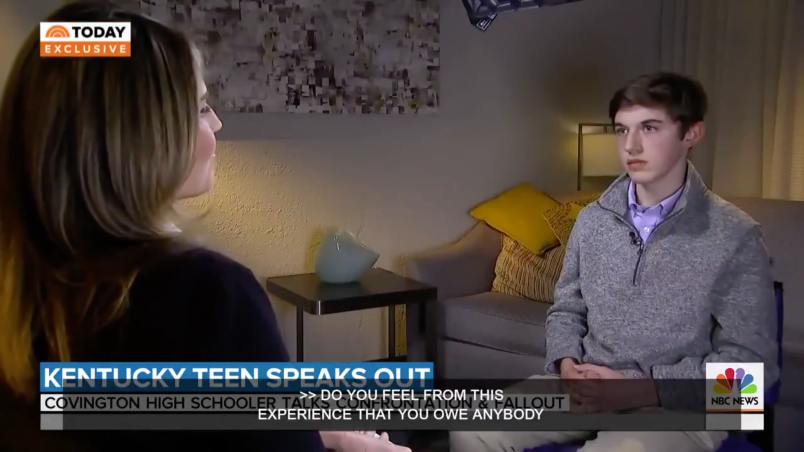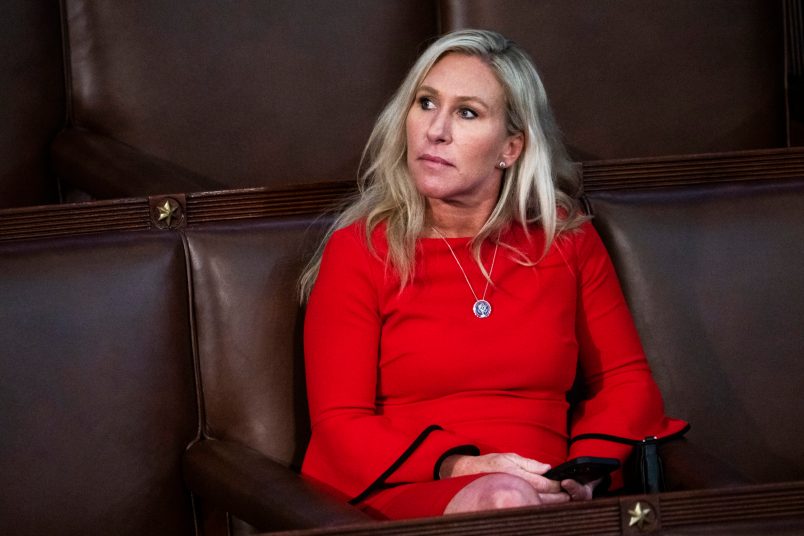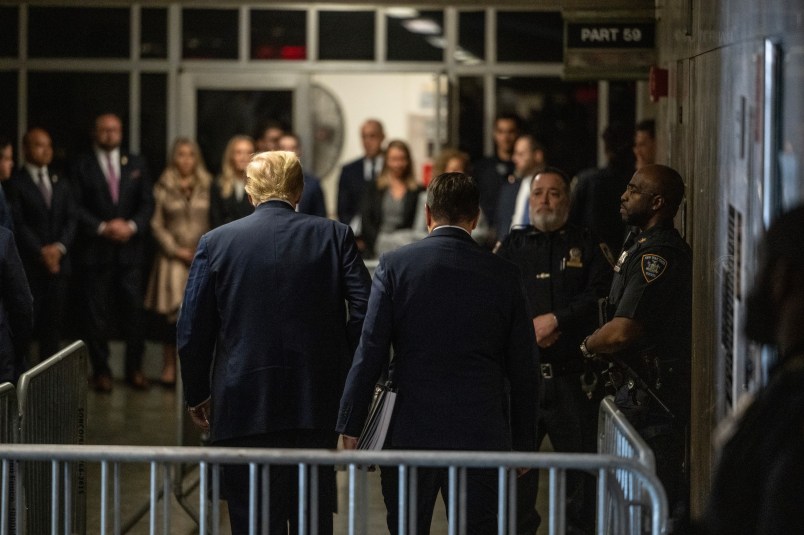Over the weekend I gave you my take on the incident at the Lincoln Memorial last Friday. As I argued, the original video that went viral lacked a good deal of context. But when you add in the context, the upshot is not dramatically different, an ugly interaction in which a gaggle of white teens, many in MAGA caps, taunt and jeer an impassive Native American man with ‘tomahawk chops’ amid various hoops and hollers. NBC News is now out with an interview with Nick Sandmann, the high schooler at the center of the drama. Sandmann’s “position”, as he calls it, is that he wasn’t disrespectful and that he didn’t do anything wrong.
Sandmann’s interview is of a piece with the statement he put out earlier in the week with the assistance (or probably actually written by) a GOP PR firm hired by his parents. Sandmann says he was simply trying to defuse the situation and wanted to listen to Phillips.
As someone who was once a high school boy, I can say with some confidence that that is utter bullshit. If you set aside the political and racial dynamics of the encounter, the crowd dynamics are quite clear. Sandmann isn’t trying to defuse the situation. He’s acting like a tough guy and signaling his disdain for Phillips and quite clearly playing to his classmates. He’s feeding off their hoops and hollers and vice versa. The smirk is partly the property of all young men. But in Sandmann’s case it’s also about the confidence of privilege and power in the face of the outlandishness of Phillip’s self-presentation.
As I noted in the other post, the tomahawk chops tell the story clearly. It’s an unruly crowd situation. It’s a politicized situation. It’s ugly. Beyond the reality of the encounter, you have the unmistakable imagery of jeering and smiling white kids in MAGA caps surrounding one dark complected man. These symbols are so potent it makes it hard for any of us not to bring all sorts of experiences, fears, angers, senses of grievance to the moment we see on video.
But this episode also captures the nature of all these social media moments and what creates their intensity and instability. Sandmann and his pals are there acting like jerks. The racial dynamics and aggression are crystal clear in the student crowd’s chopping motions. The adult chaperones have failed in letting the situation escalate to this point in the first place. Then suddenly Nick Sandmann is the focal point and carrying the weight of righteous anger at dickish teens, white supremacy and Trumpism across the country.
At a basic level that’s not fair – something that quickly catches fire not only with white parents with pre-existing feelings of racial grievance but others just freaked out by the randomness of the blow up. I spoke to one Covington parent this week who is a diehard anti-Trump, Democrat who is nonetheless upset that his son is getting tarred for the actions of Sandmann and the kids surrounding him that afternoon. But fairness is too thin a standard. One of the essentials of social and racial inequality is that some classes of people consistently get more fairness than others. If we’re so concerned about fairness for Nick Sandmann, who now has high priced media advisors coaching him for sympathetic interviews on national news, what about Tamir Rice who did nothing wrong at all and ended up dead in a playground in Cleveland? Everybody deserves second chances. Some people get third and fourth chances and some get none. But this kind of either/or thinking doesn’t make sense. Taken too far this quickly degenerates into a sort of intersectional whataboutism.
The issue is less that it’s unfair as that it makes no sense, something that quickly becomes clear when you dig into the particulars. Sandmann is too random, callow and specific to possibly hold up for long as the focus for the issues he now represents. You dig in and there’s just not remotely enough there.
So we have the recurrent pattern of flash food social media blow ups in which the specifics of the people involved can’t bear the weight of the social realities and injustices they come to symbolize. In a sensible world Sandmann gets school level discipline for acting like a jerk and some consequence and education about racism, history and empathy. But since we’re in a world of social media he quickly ricochets between national bogeyman and white grievance hero until a few days go by and we forget about it. The story of privilege and inequality he is part of is quickly recapitulated in the production of media handlers, praise from the President and the fact that many in the majority culture can empathize with the firestorm he’s caught up in even as many recognize he acted terribly in the incident itself. We all empathize most with people who seem like us. The nature of empathy is second chances and seeing the full person rather than their worst moment. Like so much in our society it is unevenly distributed.
We shouldn’t lose sight of the fact that for all their jaggedness and insubstantiality these incidents do have some public educative effect. I’d like to think that someone somewhere gets more now than before that dunking on a Native American man in a crowd environment with ‘tomahawk chop’ motions is not okay and some sense of why it’s not. But these incidents themselves will never be what is expected of them, because again, they’re too individual, too random to carry the freight of the social ills or evils they come to symbolize.








